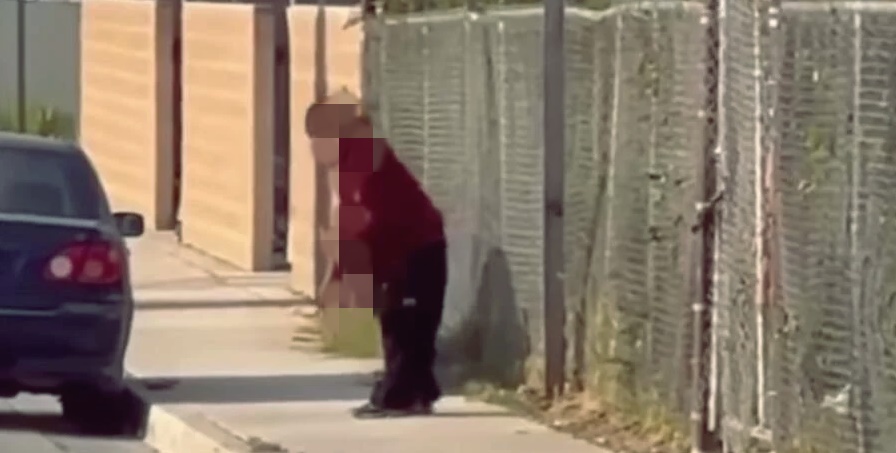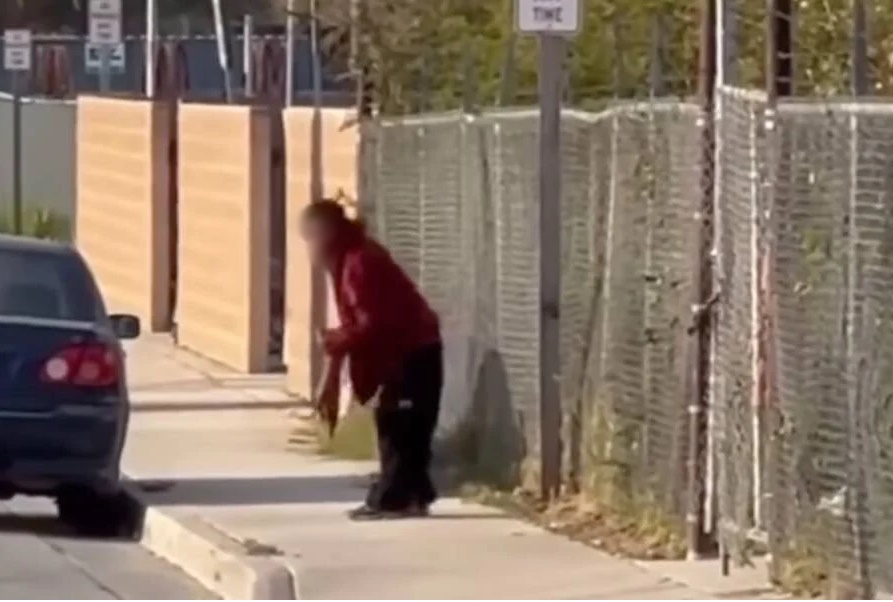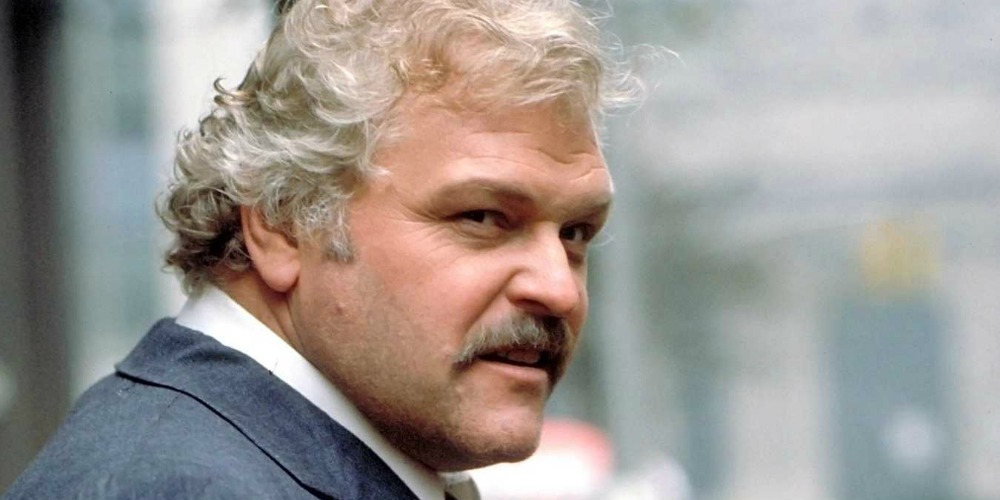True Crime
The Clown and the Candyman: Interview With True Crime Series Producer Jacqueline Bynon
In the 1970s, thousands of teenage boys went missing across North America. Some returned home, and some disappeared without a trace. Others — more than 60 young men — were brutally murdered by two of America’s most prolific serial killers — John Wayne Gacy, the Killer Clown, and Dean Corll, the Candyman. The Clown and the Candyman — a new 4-part series from Cineflix — explores the murders, identifies the victims, and outlines the shocking truth about the underground child sex trafficking ring that connects the two killers.
I was able to speak with Executive Producer Jacqueline Bynon about the documentary and the case it details. Speaking with Bynon is like flipping through an encyclopedia of true crime. Names, dates, and gory details, she knows it all. As the host of The Clown and the Candyman — both the series and its accompanying 8-part podcast — she’s a veritable fountain of knowledge.
Bynon was the driving force behind many stand-out investigative true crime series, TV movies, and documentaries with credits that include Children of the Snow, Girl in the Bunker, Joyce Mitchell and the New York Prison Break, Murder in Paradise, Cold Blood, Motives & Murders, and the Gemini Award-winning series Nazi Hunters. Her dedicated commitment to investigative journalism has uncovered the truth behind some shocking secrets, and The Clown and the Candyman offers no exception.

The journey to this story, however, started long before Bynon’s sights turned to Corll and Gacy. “It started with another story we did called Children of the Snow, and that was about four kids murdered over a 13 month period in 1977 in Oakland County, Michigan,” she explains. In the Oakland County murders, four kids were snatched off the street in broad daylight. “They were found dumped in the snow at the side of the road. There were two boys and two girls, and they were like 10 and 11. They were kids. And the boys had been brutally, brutally assaulted, and they never caught the guy who did it.”
It was the largest manhunt in US history at the time, the story was even covered by Barbara Walters. But they never caught who killed those children. “I got to know all the family members of each of the kids, and they’ve never given up,” said Bynon. “The one father of the last kid, Timothy King, his father [Barry King] never gave up. And he just died in 2020. He never knew who killed his son.”
What Bynon was able to uncover was an attachment to a pedophile network, with connection to a man who owned an island in Lake Michigan called North Fox Island. Though it was set up as a summer camp for boys, it was all an elaborate cover.
“It was the original pedophile island, to be brutally honest.” Says Bynon, referring to Jeffrey Epstein’s own sordid empire. “They were getting tax credits because it was set up as a boys camp. And the thing is, it was for youth who needed help — these were underprivileged youth.”
The most horrible aspect of this story and its connection to Dean Corll and John Wayne Gacy is that it was all real. “What was done to these boys by Dean Corll in Houston, and John Wayne Gacy in Chicago,” she explains, “We know they have killed over 60 boys — abducted, raped, tortured and murdered. And so that’s what The Clown and the Candyman is about, is that everyone thought these two dudes were just serial killers, but they were also part of and connected to this underground world of pedophiles.”
The Candyman — Dean Corll — was a well-liked neighborhood staple. His mother owned a candy factory, and Corll would give candy to the local children to gain their trust. “If you’re in a neighborhood in Houston — this was a real blue collar neighborhood,” Bynon detailed, “And you know, this guy who had a car, he had this pad, and he had beer and he had drugs, and you’re 14 or 15 — you know guys like that. They’ll do anything. So they would go over to get stoned or get drunk, and then he would put the handcuff trick on them. He had a torture board he would attach them to. And he kept them for days, and he did horrendous things to them. These boys were begging to be killed after a few days, begging to be killed.”
Corll had two accomplices, teenagers in the neighborhood, to help him attract his victims. He told his accomplices that the boys were going to be sent to a sex ring that was out of Dallas. “But they weren’t,” said Bynon, “They were there when he murdered them.”
But these accomplices ended up being Corll’s downfall, in the end. The Candyman would have gotten away with his brutal murders, had it not been for a teenager named Elmer Wayne Henley. “He brought a girl over one night, and Dean Corll didn’t like girls at all.” Bynon reported, “And he got mad, and he went into his room and these guys got all stoned and drunk, and when they came to, Dean had tied them all up.”
Corll was furious, telling Henley that he was going to kill them. “Henley — being the conniving guy — said, look, whatever you want, I’ll do whatever you want to, okay. Dean Corll said, alright, I’ll let you go. But you’ve got to rip her clothes off and rape her while I rape [Henley’s friend]. And Henley said yes.” Once the handcuffs were off, Henley grabbed Corll’s gun and shot him to death. He then led the police to the boat shed where Corll had buried all of his victims.

Elmer Wayne Henley at the boat shed.
The connection between Corll and the sex trafficking network in Houston came as a surprise. About two years after the bodies were dug up from Corll’s boat shed, the police found photos of some of those victims in a warehouse they raided in Houston.
“This was 1973 at the time in Houston, there were 5000 missing boys.” Bynon commented, “I remember going, are you serious? And nobody did anything because at that time, in the 1970s, they just thought they were all runaways. They were missing kids and the cops didn’t do anything. And you can’t blame the cops because they had the homicide division, and there was the juvenile division. They were on different floors, and a missing kid wasn’t considered that.”
There were 27 bodies that they found that had been killed by Dean Corll. 11 of those kids all went to the same high school.
I asked Bynon about the connection between John Wayne Gacy and the child sex trafficking network run by a man named John Norman. While Gacy had initially confessed to killing approximately 30 young men, he later recanted his story when on death row, insisting that others had access to his home and likely used it as a dumping ground. One of Gacy’s former employees, Philip Paske, used to live with Norman and assisted him in the running of his child pornography and prostitution ring. Though Paske only worked for Gacy for three months, their connection certainly raises a few eyebrows.
“John Norman was like the pedophile of pedophiles,” explained Bynon, “He loved young boys. And then he said, I can make a living out of doing this, he turned his proclivity into a business. And so he started putting ads in magazines and he started getting these young boys to come to this place, and he would pimp them out. He would pimp them out to other pedophiles across the country. But under the guise of giving these young men a helping hand.”

Lt. Jason Moran of the Cook County Sheriff’s Office
Uncovering the case of the sex trafficking ring took an unlikely and almost unbelievable turn. It all started with a Boy Scout troop — Troop 137 in New Orleans — that was started specifically for the purpose of finding young boys to abuse. “And they would have got away with it, had it not been for a broken conveyor belt.” teased Bynon.
Back in the 1970s, you could drop off film at a drive-through Fotomat, and come back to pick it up a few days later. One fateful day, the machine broke down. A mechanic went to repair it, and happened to see the last photos (of child pornography) that were sitting on the conveyor belt. The police were called, but with just the photos, there was not much of a lead to go on.
“These two cops are looking at the photos, and they couldn’t find out what to do with it. They couldn’t figure out who these people were until their boss walked by, and he looked at the photo and he went, oh, look on the coffee table there. There’s a Boy’s Life magazine. You can only get that if you’re a Boy Scout.”
The officers went to the Boy Scouts, but they weren’t given any information, other than being told that Troop 137 was no longer active.
“They got search warrants. And they went to the troop leader’s homes. They went in there and they said, there were boxes of stuff. Photographs,” Bynon divulged. “What was amazing about that story was these two cops never gave up. The FBI wouldn’t help, no one would help them, and they never gave up. And they went and they got those search warrants. And they ended up filing charges against 17 people, all the troop leaders.”
Word got out among the perpetrators. The main photographer for that particular group got wind of the warrants and started to stress. He took his own photos and put them in a bag, and drove out to a bridge off of Lake Pontchartrain. This damning bag was dumped off of the bridge and believed to be lost forever.
But somehow, shockingly, the bag of evidence landed on a lily pad. The serendipity of this is not lost on Bynon. “The next morning — it’s like winning a lottery — a cop and his son are fishing. And the son’s really bored, and he sees this bag sitting on the lily pad. And he goes, hey dad, what’s that? And they go over to it. And the father opens it up, and he sees all this film and all these photos. And he goes, this must have something to do with what Frank and Gus were investigating.”
The Clown and the Candyman podcast goes into this story in great detail, even interviewing the two detectives who were on the case. Between the child prostitution and the horrific murders committed by Gacy and Corll, there’s a lot about the series that is truly shocking. “The horror story of The Clown and the Candyman, is that they got away with it, with so many young men, and so many people didn’t do anything about it for years.” Bynon reflected, “The police didn’t do anything about it. They just said, they were missing kids and they were hustlers. So who cares? You know, who cares?”
“This is a real life, never ending horror story,” she emphasized, “And it’s still going on. It’s just that in the 1970s, we were kind of naive. And we didn’t know. And it started to be exposed. Now we have social media. So we’re now thinking, Oh, it’s all over the place. Well, they’re always all over the place. But now we’re just hearing more about it, but we’re still not catching them.”

Searchers discover four more body at John Wayne Gacy’s Home.
While Corll was stopped only by his own death, John Wayne Gacy likely would not have gotten caught had it not been for his last victim, Robert Piest. Gacy worked in construction, and he specialized in pharmacies. One day, he went out to do a quote for a pharmacy, and met employee Robert Piest, who was working a part time job. But Piest wanted more money.
Piest went outside to Gacy’s truck and told him he was looking for work. “He says, oh, come on, you can fill out an application at my house. But Robert Piest was a high school student, and it was his mother’s birthday that night, and his mother came to pick him up. He wasn’t there. But he didn’t fit the mold.”
The overnight officer who took that missing persons report in the morning said to his boss, Lieutenant Joseph Kozenczak, “There’s something odd, this one just seems weird. This kid doesn’t fit. His parents were adamant. And it was because of that. That the cops took it seriously. He didn’t fit the typical mold of a missing kid.” The police obtained a warrant for Gacy’s home, thinking he might have been holding Piest against his will. They found some suspicious items, which led to a surveillance team following Gacy, and eventually, his arrest.
I asked Bynon what drew her to true crime. “I like to remind people of the horror that exists out there. And there’s a lot of ugly stuff. And there are a lot of bad guys out there. And that’s why I like doing crime,” she states. “And the other thing is, I keep doing this because I keep hoping some time when I talk to a killer, I’m going to see something in their facial expression, or something in the way they look, that I can go, oh, there’s a serial killer. But you can’t tell them. These guys are not guys in trench coats. They’re people you wouldn’t notice on the street, or you’d think they’re nice guys. That’s what the frightening thing about these things is these guys, you can’t pick them out. And I keep hoping I can.”
For the full shocking story, you can check out The Clown and The Candyman on the streaming service discovery+, now available to US audiences. The series will air on Investigation Discovery on March 14 & 15.
You can find the podcast now on Apple and Spotify.
For more on true crime, click on to read about the Night Stalker, Richard Ramirez
'Civil War' Review: Is It Worth Watching?
Follow our new YouTube channel "Mysteries and Movies" here.

Strange and Unusual
Man Arrested for Allegedly Taking a Severed Leg From Crash Site And Eating It

A local California news station reported late last month that a man was being held in custody for allegedly taking the severed leg of a deceased train wreck victim and eating it. Be warned, this is a very disturbing and graphic story.
It happened on March 25 in Wasco, Calif. in a horrible Amtrak train accident a pedestrian was struck and killed and one of his legs was severed.
According to KUTV a man named Resendo Tellez, 27, stole the body part from the impact site.
A construction worker named Jose Ibarra who was an eyewitness to the theft revealed to officers one very grim detail.
“I’m not sure from where, but he walked this way and he was waving a person’s leg. And he started chewing on it over there, he was biting it and he was hitting it against the wall and everything,” said Ibarra.
Caution, the following picture is graphic:

Police found Tellez and he willingly went with them. He had outstanding warrants and now faces charges of stealing evidence from an active investigation.
Ibarra says Tellez walked past him with the detached limb. He describes what he saw in lurid detail, “On the leg, the skin was hanging. You could see the bone.”
The Burlington Northern Santa Fe (BNSF) police arrived on the scene to begin their own investigation.
According to a follow-up report by KGET News, Tellez was known throughout the neighborhood as homeless and non-threatening. A liquor store employee said she knew of him because he slept in a doorway near the business and was also a frequent customer.
Court records say that Tellez took the detached lower limb, “because he thought the leg was his.”
There are also reports that a video exists of the incident. It was circulating on social media, but we won’t provide it here.
The Kern County Sherriff’s office had no follow-up report as of this writing.
'Civil War' Review: Is It Worth Watching?
Follow our new YouTube channel "Mysteries and Movies" here.
News
Woman Brings Corpse Into Bank To Sign Loan Papers

Warning: This is a disturbing story.
You have to be pretty desperate for money to do what this Brazilian woman did at the bank to get a loan. She wheeled in a fresh corpse to endorse the contract and she seemingly thought the bank employees wouldn’t notice. They did.
This weird and disturbing story comes via ScreenGeek an entertainment digital publication. They write that a woman identified as Erika de Souza Vieira Nunes pushed a man she identified as her uncle into the bank pleading with him to sign loan papers for $3,400.
If you’re squeamish or easily triggered, be aware that the video captured of the situation is disturbing.
Latin America’s largest commercial network, TV Globo, reported on the crime, and according to ScreenGeek this is what Nunes says in Portuguese during the attempted transaction.
“Uncle, are you paying attention? You must sign [the loan contract]. If you don’t sign, there’s no way, as I cannot sign on your behalf!”
She then adds: “Sign so you can spare me further headaches; I can’t bear it any longer.”
At first we thought this might be a hoax, but according to Brazilian police, the uncle, 68-year-old Paulo Roberto Braga had passed away earlier that day.
“She attempted to feign his signature for the loan. He entered the bank already deceased,” Police Chief Fábio Luiz said in an interview with TV Globo. “Our priority is to continue investigating to identify other family members and gather more information regarding this loan.”
If convicted Nunes could be facing jail time on charges of fraud, embezzlement, and desecration of a corpse.
'Civil War' Review: Is It Worth Watching?
Follow our new YouTube channel "Mysteries and Movies" here.
Trailers
HBO’s “The Jinx – Part Two” Unveils Unseen Footage and Insights Into Robert Durst Case [Trailer]

HBO, in collaboration with Max, has just released the trailer for “The Jinx – Part Two,” marking the return of the network’s exploration into the enigmatic and controversial figure, Robert Durst. This six-episode docuseries is set to premiere on Sunday, April 21, at 10 p.m. ET/PT, promising to unveil new information and hidden materials that have emerged in the eight years following Durst’s high-profile arrest.
“The Jinx: The Life and Deaths of Robert Durst,” the original series directed by Andrew Jarecki, captivated audiences in 2015 with its deep dive into the life of the real estate heir and the dark cloud of suspicion surrounding him in connection with several murders. The series concluded with a dramatic turn of events as Durst was apprehended for the murder of Susan Berman in Los Angeles, just hours before the final episode was broadcast.
The forthcoming series, “The Jinx – Part Two,” aims to delve deeper into the investigation and trial that unfolded in the years after Durst’s arrest. It will feature never-before-seen interviews with Durst’s associates, recorded phone calls, and interrogation footage, offering an unprecedented look into the case.
Charles Bagli, a journalist for the New York Times, shared in the trailer, “As ‘The Jinx’ aired, Bob and I spoke after every episode. He was very nervous, and I thought to myself, ‘He’s gonna run.’” This sentiment was mirrored by District Attorney John Lewin, who added, “Bob was gonna flee the country, never to return.” However, Durst did not flee, and his arrest marked a significant turning point in the case.
The series promises to showcase the depth of Durst’s expectation for loyalty from his friends while he was behind bars, despite facing serious charges. A snippet from a phone call where Durst advises, “But you don’t tell them s–t,” hints at the complex relationships and dynamics at play.
Andrew Jarecki, reflecting on the nature of Durst’s alleged crimes, stated, “You don’t kill three people over 30 years and get away with it in a vacuum.” This commentary suggests the series will explore not only the crimes themselves but the broader network of influence and complicity that may have enabled Durst’s actions.
Contributors to the series include a wide range of figures involved in the case, such as Deputy District Attorneys of Los Angeles Habib Balian, defense attorneys Dick DeGuerin and David Chesnoff, and journalists who have covered the story extensively. The inclusion of judges Susan Criss and Mark Windham, as well as jury members and friends and associates of both Durst and his victims, promises a comprehensive perspective on the proceedings.
Robert Durst himself has commented on the attention the case and the documentary have garnered, stating he is “getting his own 15 minutes [of fame], and it is gargantuan.”
“The Jinx – Part Two” is anticipated to offer an insightful continuation of Robert Durst’s story, revealing new facets of the investigation and trial that have not been seen before. It stands as a testament to the ongoing intrigue and complexity surrounding Durst’s life and the legal battles that followed his arrest.
'Civil War' Review: Is It Worth Watching?
Follow our new YouTube channel "Mysteries and Movies" here.
-

 News6 days ago
News6 days agoOriginal Blair Witch Cast Ask Lionsgate for Retroactive Residuals in Light of New Film
-

 Movies6 days ago
Movies6 days agoSpider-Man With a Cronenberg Twist in This Fan-Made Short
-

 News3 days ago
News3 days agoPerhaps the Scariest, Most Disturbing Series of The Year
-

 Movies5 days ago
Movies5 days agoNew F-Bomb Laden ‘Deadpool & Wolverine’ Trailer: Bloody Buddy Movie
-

 News4 days ago
News4 days agoRussell Crowe To Star in Another Exorcism Movie & It’s Not a Sequel
-

 Lists3 days ago
Lists3 days agoThrills and Chills: Ranking ‘Radio Silence’ Films from Bloody Brilliant to Just Bloody
-

 Movies5 days ago
Movies5 days ago‘Founders Day’ Finally Getting a Digital Release
-

 Movies4 days ago
Movies4 days agoNew ‘The Watchers’ Trailer Adds More to the Mystery



























You must be logged in to post a comment Login